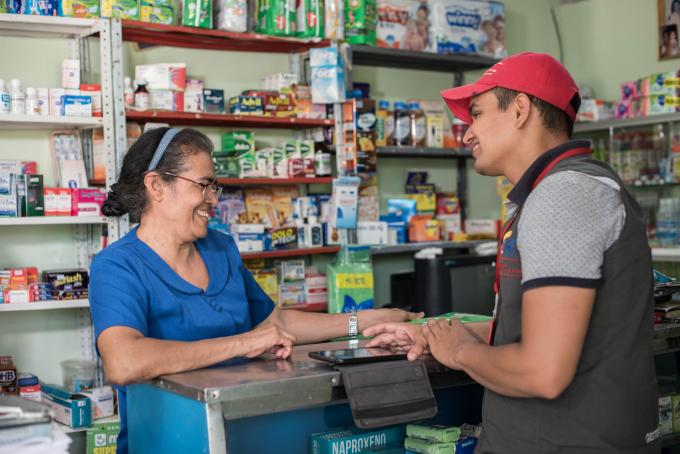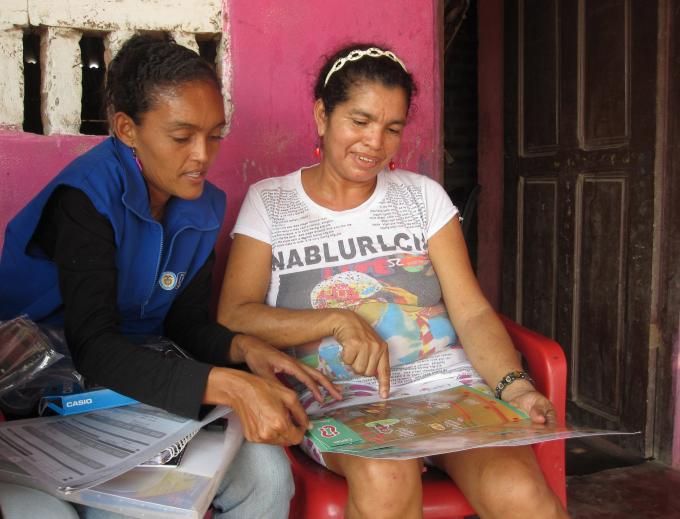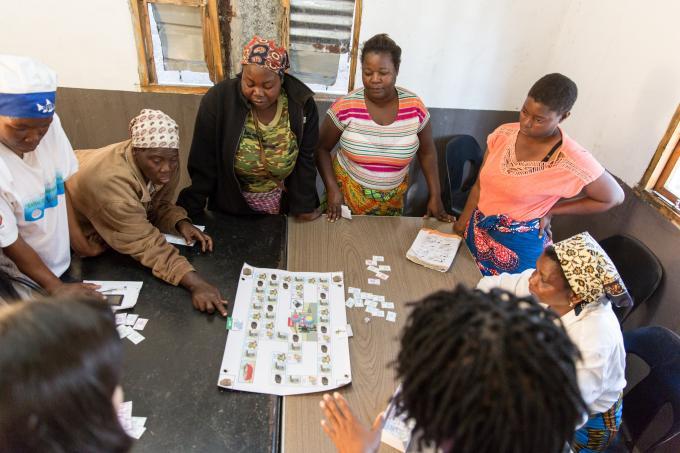Financial inclusion begins with understanding what drives customers and partners, from individuals and financial institutions to governments and funders
Introduction
Fundación Capital is a social enterprise working to improve the financial lives of millions of people in poverty by designing and delivering solutions that make families more resilient to economic stress. It partners with large-scale government social protection programmes and financial institutions in Latin America and Africa, helping them increase economic opportunities for families in poverty. To achieve this, Fundación Capital has developed digital training products that governments and banks across ten countries have used to help low-income families, most of them first-time users of technology with little formal education, better manage their money, increase their savings, and improve their economic well-being.
What does customer value mean to you?
We have a variety of different customers. Since our work seeks to improve the economic lives of families living in poverty around the world, our most important customers are the families that we work with. Other customers include our partners, primarily national governments and financial institutions. The one thing that is important about Fundación Capital is that we seek to achieve scale and systems change. When you talk about customer value, I think the most important part is to put yourself in the shoes of your customer and understand where they are coming from. For us, customer value means essentially a happy customer, someone who is engaged, a low-income person who can now participate in the market and who is empowered to make informed financial decisions.
We work to create better systems and financial products, that improve people´s livelihoods, but we do so with the vision of really understanding user needs. There is a tendency toward designing from the desk with a broad stroke brush and saying: “This is good enough, because this person is already so poor and anything that you are coming with is going to make them happy.” But people are very much aware when you are giving them something that is not the best product and when you are treating them like somebody who is not an interesting customer.
When we start to think about financial technology and what it is going to take for people to transact, we ask questions like: “Why does mobile money not have high take up rates in all countries?” Part of it is because we are not really understanding all the drivers and the complexity of the user experience in each country. If I can´t read, it does not help that you send me a text message. Instead, you can design more graphic interfaces or have people’s children help them engage with the product. If you understand where the user is coming from, you can be much more effective.
What do you think governments and the social enterprises could do to ensure that customer-centricity is at the centre of projects?
We always talk about the process of co-creation. In that process, there is a significant phase of discovery, in which we aim to understand the current administration´s priorities, their strategies and investments, as well as key bottlenecks. If the banking regulations in a country require you to show five different kinds of identification and paperwork, and you have to travel to the central towns to open a simplified savings account, then families in poverty won’t be able to access a safe place to save. If it is too complex and too expensive, then there is no value to the customers. That is where you can start to work with the government and say: “Could you think about changing this regulation or simplifying requirements to meet the needs of this part of the population?” Those kinds of conversations can happen and it is important to identify those bottlenecks. In looking at changes in policies or products, the emphasis should be on the co-creation, because you cannot just copy-paste a model from one country to the next.
To achieve systems change as a social entrepreneur and be invited to have a seat at the table with governments (a rare opportunity), you need to invest time and money to build relationships. It is something that we absolutely value, because it allows us to understand our partners’ needs. Unfortunately, funders are not always willing to finance investments in patient, relationship-building capital. The Ford Foundation supported us for many years to do that kind of work. We try to clearly outline this need in our funding proposals, but donor expectations are usually focused on questions like: “Within one year, what kind of change can you achieve? How many people´s lives are going to be affected and improved? Demonstrate results with rigorous evidence, and do it within a very short amount of time limited funds.” Systems change takes time, so it’s not that simple.
What else has to be improved in the relationship between the donor and the social enterprise for a better alignment of fulfilling the metrics and customer values?
Just like we do with governments, social entrepreneurs also have to build relationships with funders. It is rare to find funders that trust you inherently. They should not in a certain sense, because they have responsibilities over the funds that they are providing. They want to make sure that they are spent well, but if there is a sense of trust in your technical knowledge and expertise, and if you have frequent conversations along the way, then any pivots that you consider important won’t come as a surprise and they’ll support you to make those changes. You should be able to have that conversation with the funder openly and honestly. Even if it diverges significantly from what you had initially set out to do, if you know that it is going to bring increased value to the customers, to the families living in poverty, then the funders should be willing to make those changes with you.
It is not always easy to have those kinds of conversations, but if funders are clear on what you are setting out to achieve, and you have regular check-ins and meet-ups, you can establish trust and have conversations about when you need to pivot, and why, so that you can have the greatest impact. In the funding world, there is a tendency toward having significant reporting requirements, but it’s to try to be as open, honest, and ethical about your reporting and take the funder along on the journey with you.
If you put yourself in the shoes of a company that is struggling to be customer-centric, what would be your key recommendations?
If your headquarters and your staff are not close to your customers, then make sure your staff spend some time in the field with them. It can help to bring on an anthropologist to guide you through the process of doing ethnographic studies, essentially spending some time in the shoes of your customer. Sometimes, bringing in staff or external consultants that have a different perspective can be useful, like a designer, for example. There has been a lot of work done on user-centric design, and there are firms that specialise in integrating those methodologies. It’s not difficult to do on your own, but in general it can be useful to bring in a fresh set of eyes.
Sometimes, though, you really need a reset. For example, we were recently working with some communication consultants and went through five different iterations before we finally broke down and realized we were using far too much jargon, because it is so integrated into how we do things. It is difficult to break habits and patterns. Ultimately you can simplify down to the most basic question: “What is value for your customer?” Just define it quickly: “Why are people’s lives better because of your product? What is the problem that people are facing and the core of your solution?”
If people are not using your solution, then it is not that they are bad customers, but that something is not working with your product. That’s when you need to stop and reset. In the social enterprise space, we are constantly thinking about solutions, but we do not spend enough time fully understanding the problem. You should make sure you fully grasp the problem before even starting to think about what a potential solution could be. If your product’s not working, then reset and make sure you’re asking the right questions. You may end up scrapping your product or starting from scratch, but maybe all you need is a little tweak to make a big difference.
Is there anything that you would like to add on this topic?
A few years back there was a lot of talk about the fortune at the bottom of the pyramid and profitable social businesses serving families in extreme poverty. We now know that it is really hard to have sustainable business models that reach large amounts of low-income customers. These customers are hard to reach and we can’t assume that traditional business models will work. Even traditional markets are littered with subsidies and tax breaks that skew markets for the wealthy. When we say that these businesses function really well and are creating a lot of value, we don’t consider the benefits that they leverage. We can’t expect that those who are serving the base of the pyramid have 100 per cent sustainable business models.
There needs to be more awareness of the costs and complexities of serving the base of the pyramid and providing high quality products and services. Social enterprises have specific capital needs, and they can’t always achieve full cost recovery. At the end of the day, customers living in poverty are more difficult to reach. If we want increased equity and economic participation of the nearly two billion people living in poverty, then we have to make sure that we are serving their needs and that’s not always profitable.
More information on the work of Fundacion Capital:
This is how Fundacion Capital is understanding customer needs:
If you would like to learn more about customer-centricity and social enterprises, Fundación Capital recommends:
Publication: “The Scaling Pathways Series,” co-financed with USAID and the Skoll Foundation.



